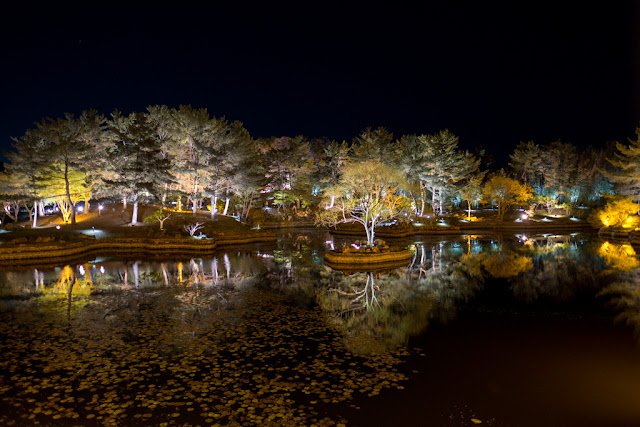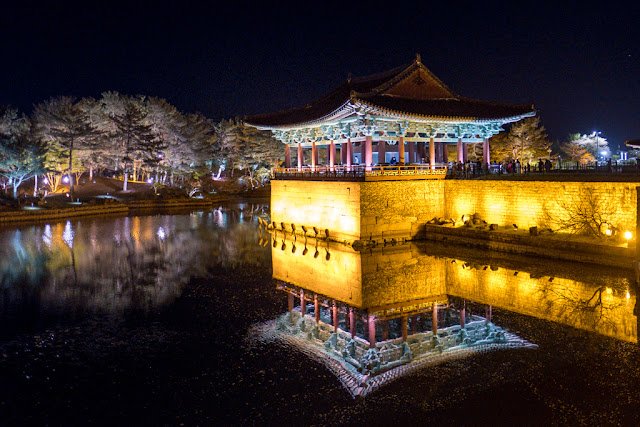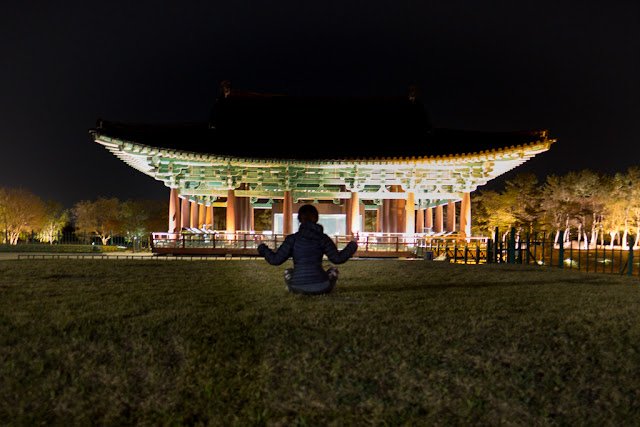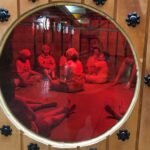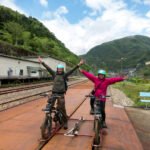If you haven’t heard of the fairytale city of Gyeongju in South Korea yet, then it’s time you did! Traveling in South Korea is like a breeze, and a two-hour-journey on the KTX high-speed train from Seoul to Gyeongju (you know, the one from the horror movie Train to Busan) would transport you to the awe-inspiring city known as the ‘museum without walls‘. No zombies, I promise!
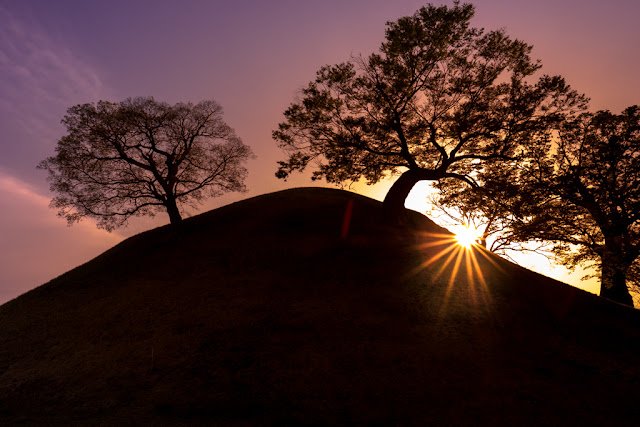
Mid-size by Korean standards with a population of just over 260,000, Gyeongju is indeed different from other megacities in South Korea. In Gyeongju, you can experience both modern and traditional Korea in beautiful mountainous surroundings dotted with hundreds of ancient sites all around, owing to the fact that Gyeongju was the capital of the Silla Dynasty from 57 BC to 935 AD–the longest period of any dynasty ruling in the history of the country. Rightly referred to as one of the largest outdoor museums in the world, the ancient capital is overflowing with culture encompassing tombs, temples, pagodas, palace ruins, and other historical sites which were designated as a UNESCO World Heritage Site in 2000.

Most people visit Gyeongju on a day trip from Busan, but it’s certainly worth staying overnight. It’s an inspiringly beautiful, romantic city where you’re bound to discover something at every corner you turn, and chances are you won’t want to leave. If we hadn’t bought our bus tickets back to Seoul already, we would have extended our stay in Gyeongju for another night, and possibly one another night, and one more night…We both loved the Silla-era capital so much that we’d love to visit it again and again, or even live there for a while.
Whether it’s the royal tombs that look like gentle hills or the stunning ancient ruins, here are the highlights from our perfect Korean dream over four nights that you should not miss out on your visit to Korea.
Best Things to do in Gyeongju
Take a stroll in a park…of tombs
In downtown Gyeongju, you’ll immediately spot the eye-catching verdant hills that punctuate the city. These beautifully-manicured collection of giant tumuli are burial mounds of the Silla Kingdom’s high aristocracy.
A walk along the paths of the tomb complex in Daereungwon Tumuli Park with 23 tombs is very relaxing, especially during spring as the trees blossom and paint the landscape in warm colors.
As you explore the final resting grounds of the Silla elites accompanied by soothing music, you might be fooled into thinking that you are in a nature park, but remember to keep an eye out for the Chunmachong Ancient Tomb where you can step in and take a glance at how the elite class rests in peace (it was closed for renovation during our visit). Also bear in mind that climbing up the tombs is prohibited and punishable by a fine of 20 million won (~17,000 USD) or a 2-year prison term.
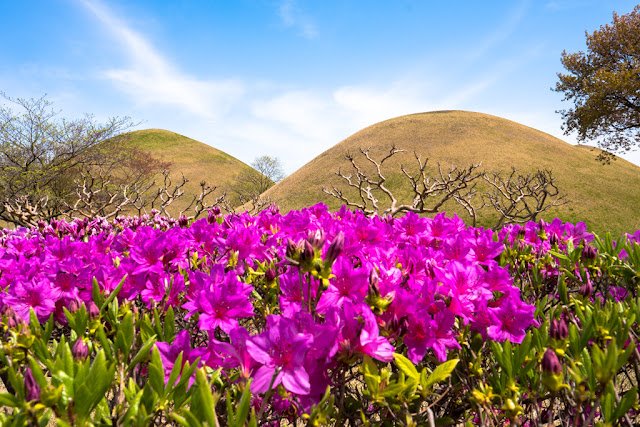
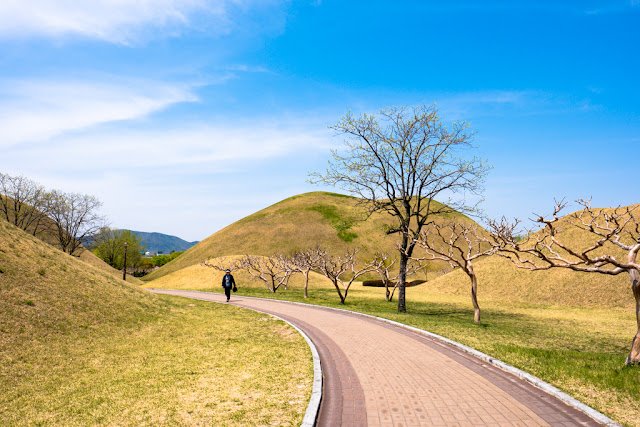


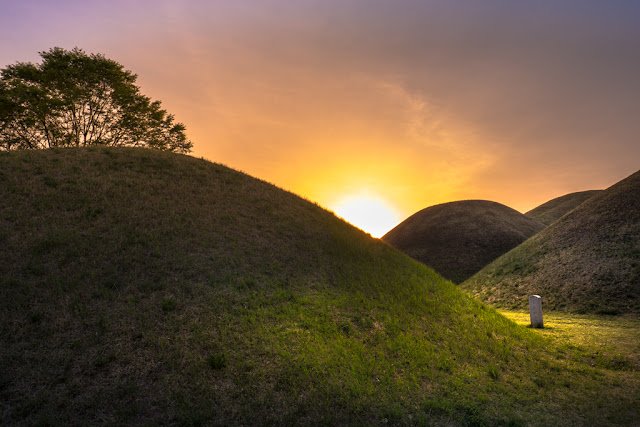
Zen out at Bulguksa Temple Gyeongju
Given that Buddhism was adopted as early as the sixth century, the Silla people left behind myriads of cultural heritages. So, one day we templed out ourselves by visiting two major UNESCO sites near Korea’s ancient capital. While Bulguksa Temple was awesome, Seokguram Grotto was a sheer disappointment.
Seokguram Grotto houses a famous Buddhist statue in the main hall, which you can only see from afar through a thick glass wall, hence this place turned out to be one of those disappointing UNESCO World Heritage Sites. Bulguksa, on the other hand, is a huge temple complex built in AD 751 on a wooded hill and is considered by many to be one of the best representations of exquisite architecture and artistry from the time of the Silla dynasty. While the intricate artworks and beauty of the temple were indeed gorgeous, it was the gardens that had an immediate impact on me.
In Korea, it’s possible to experience a so-called ‘Temple Stay‘ where you spend two days and a night among the monks–for a fee. If I were convinced that the experience would bring any enlightenment to me, apart from my bank account, Bulguksa Temple would be my pick for a temple stay. It may be well worth spending some time in this gorgeous temple complex after regular hours (yes, it’s popular with tourists). If you don’t opt for the temple stay, consider staying overnight in one of the traditional Korean houses, Hanok, which are plentiful and affordable in Gyeongju.

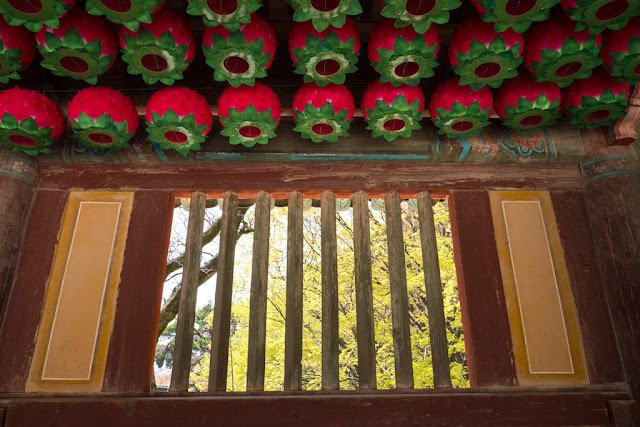

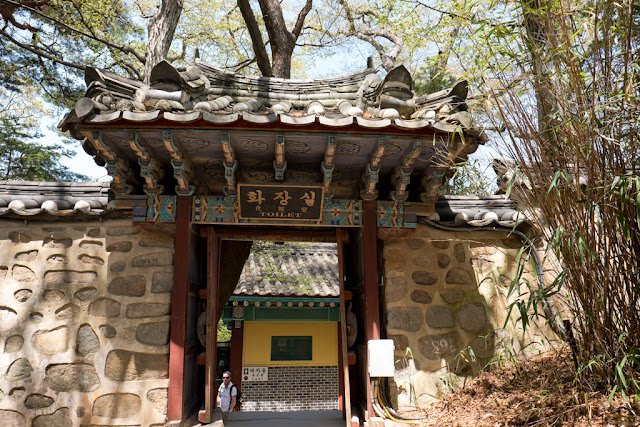

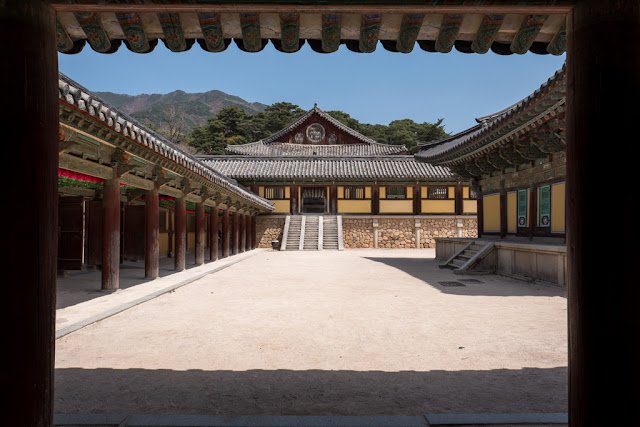
Travel back in time in Yangdong Folk Village
Yangdong Folk Village is touted as the largest traditional folk village in Korea, showcasing how deep the roots of history run in this fabulous country, and how beautiful rural Korea can be. A little, cute place with approximately 160 houses surrounded by rolling hills represents the architectural styles and the local folk customs of the Joseon Dynasty (1392-1911) at its very best. Not surprisingly, the entire Yangdong Folk Village was designated as a UNESCO Cultural Heritage Site. Many of the houses, some over 500-year-old, are well preserved in their original state, and are sure to transport you back in time!
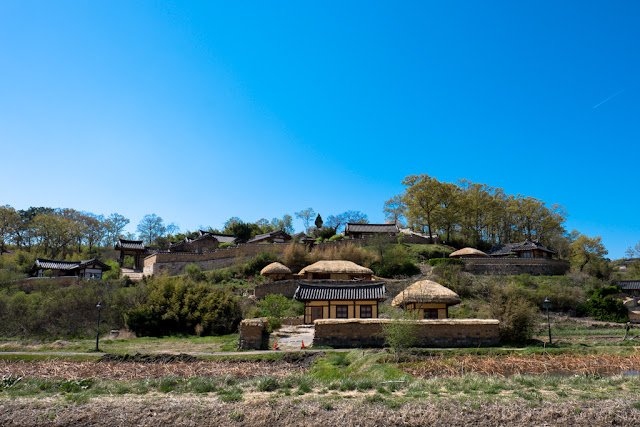
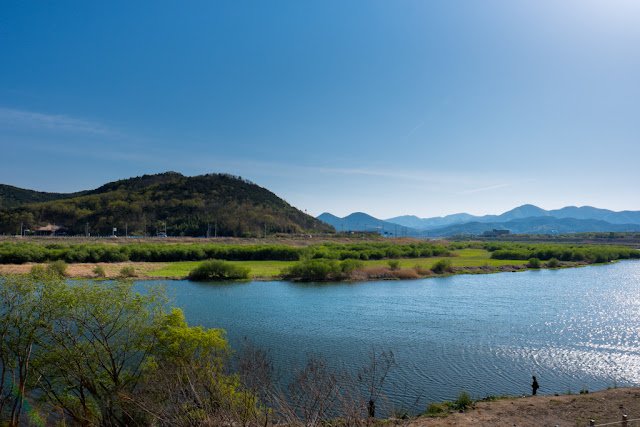

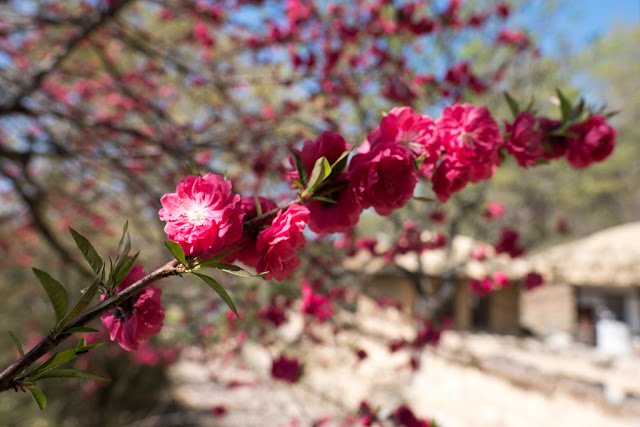
Marvel at the oldest astronomical observatory in Asia
The Cheomseongdae Observatory Tower is the oldest surviving astronomical observatory in East Asia. Built during the reign of the first Queen of Silla, Queen Seondeok (632-647), this structure still retains its original shape and form for over 1,300 years. Make sure to visit both day and night, and try to envision how the ancient Silla people used this tower to stargaze and forecast the weather.
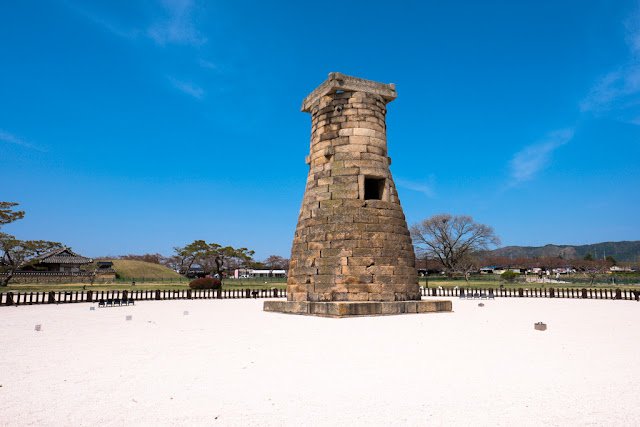
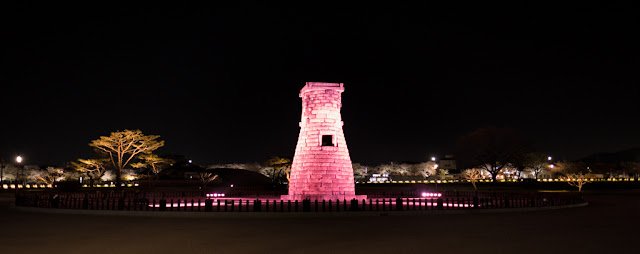
Get lost in town and mingle with Korean people
Gyeongju City is not all about historical sites. Make sure to wander around and discover the city on your own. We came across stunning street art, cherry blossoms concerts, kids having a picnic, cute cafes, and more.
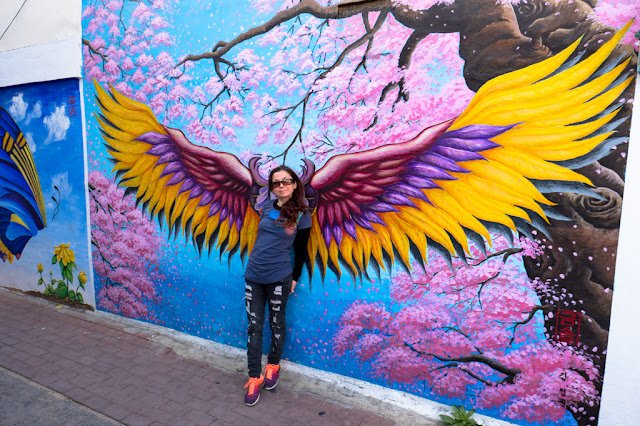


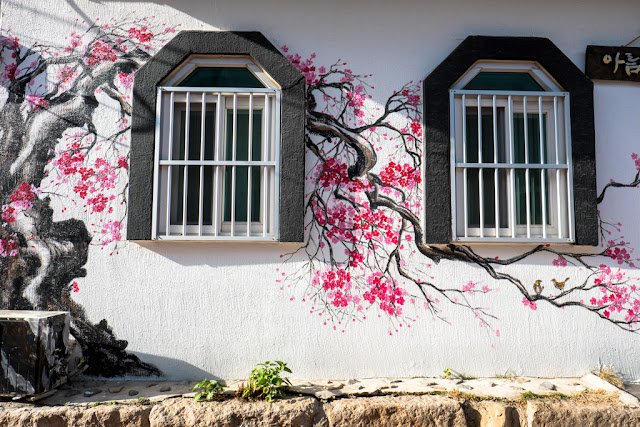
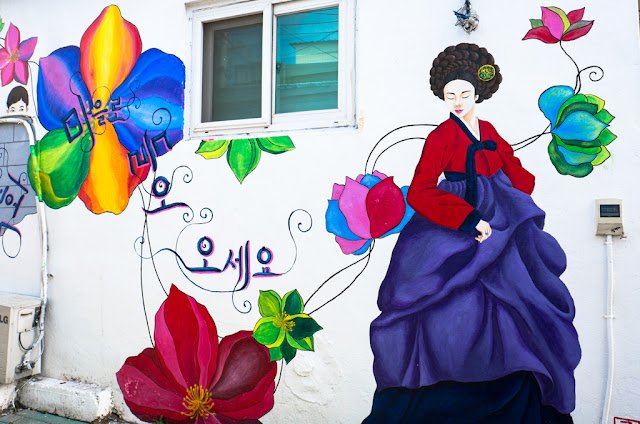
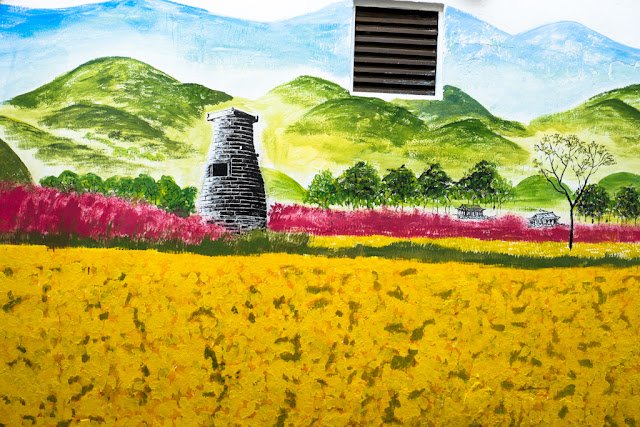
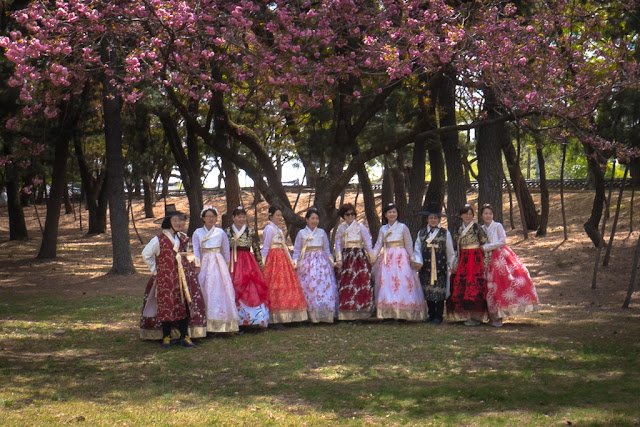
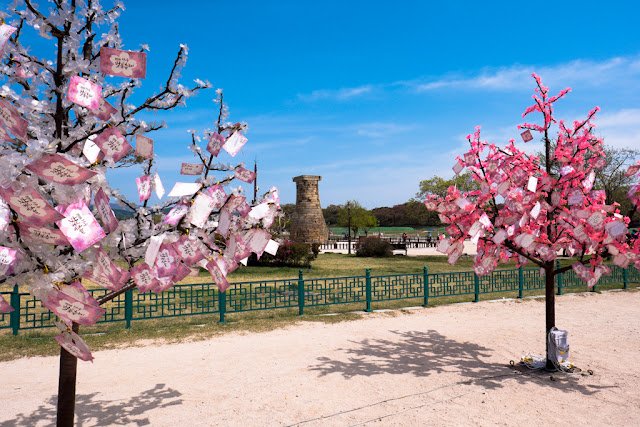
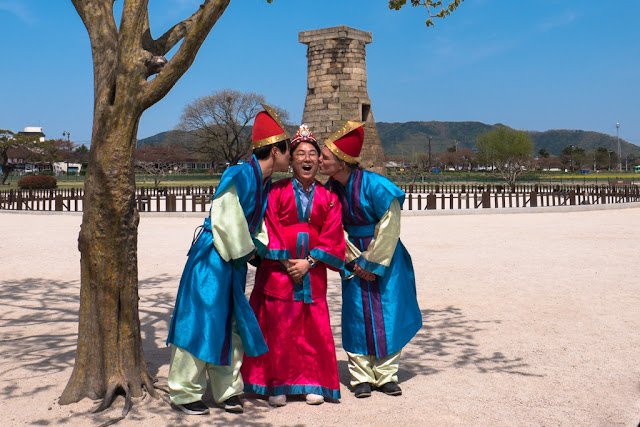
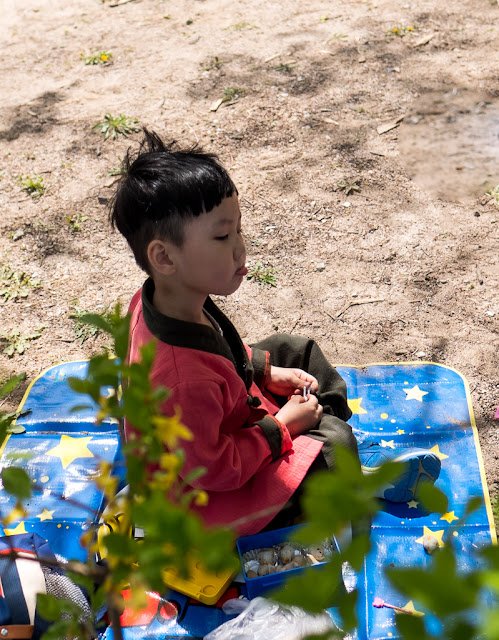
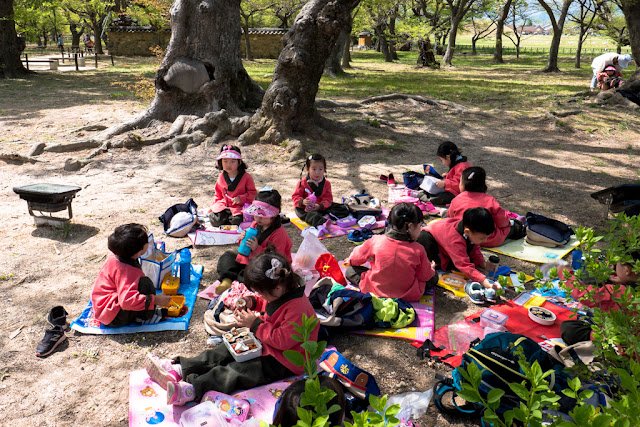
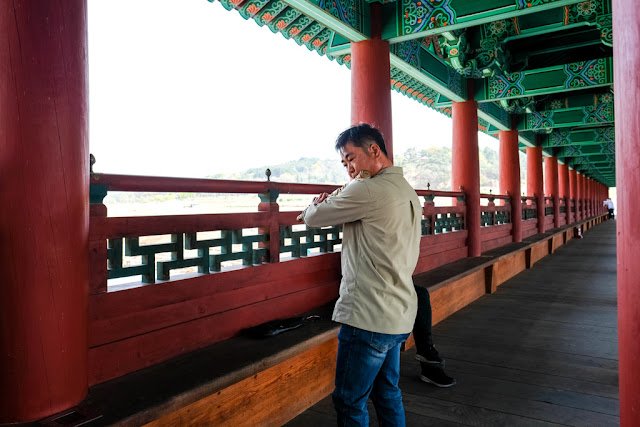

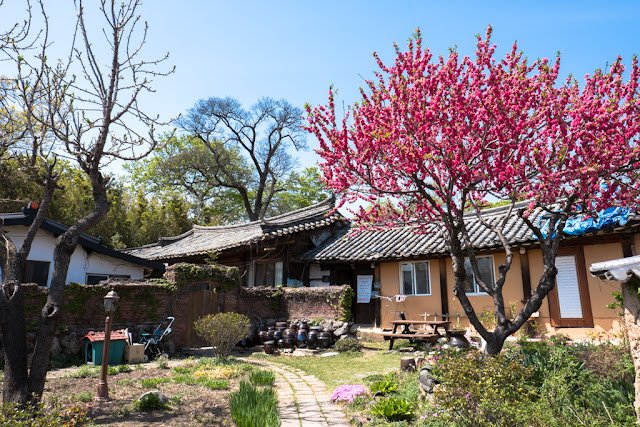

Admire the night reflections on Anapji Pond
This was the last attraction we visited in Gyeongju because it was rated with fewer stars than others. Just because of the guidebooks’ misleading ratings, we almost failed to admire its breathtaking beauty.
Known as Anapji Pond, Wolji Pond was once part of the Gyeongju Donggung Palace, where Crown Prince used to reside. Following the fall of Silla, the site fell into oblivion until the 1980s, when fragments of pottery were found displaying the word ‘Wolji’, meaning ‘a pond that reflects the moon’. Aptly named, it’s spectacularly illuminated at night drenching the intricate architecture of the palace in colorful lights.
Close your eyes and let your imagination run wild as you take in the dazzling night reflections on the pond. You’ll find it hard to wake up from this perfect dream in Gyeoungju’s Real Korea.

